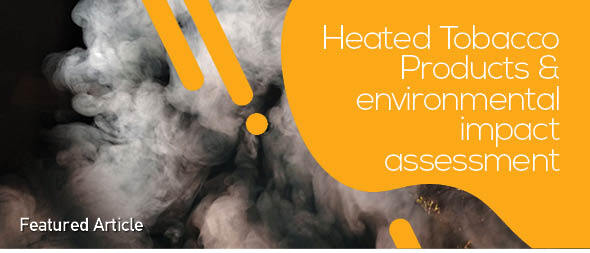Dear Editor,
Heated tobacco products (HTPs) present a multifaceted environmental challenge, which is expected to increase in significance in light of the increasing use of HTPs across the globe1 and especially in Europe2. While they may differ from traditional cigarettes in some aspects, their impact spans production-waste management and post-consumer pollution. HTP devices utilize disposable tobacco sticks or pods, and the devices themselves eventually require disposal.
The environmental impact of tobacco products, including HTPs, covers their entire lifecycle3. Each stage, from tobacco farming and curing to product manufacture, distribution, consumption, and post-consumer waste generation, contributes to environmental degradation4.
Discarded HTP sticks, similar to cigarette butts, can be harmful to the environment due to the materials they contain, such as heated or unheated tobacco, filters, and polymers5,6. According to a recent systematic review conducted by El-Kaassamani7, there are no independent research data available on the environmental impact of HTPs. However, two industry-funded studies were identified. One study examined the environmental impact of improper disposal of HTP sticks compared to cigarettes8, while the other explored a method to treat nicotine leachate in water9.
Heat-not-burn tobacco products (HTPs) emit harmful chemicals such as nicotine, particulate matter, benzene, acrolein, and other toxic elements. These emissions not only affect indoor air quality but also contribute to overall environmental pollution. Recent studies have shown that HTPs may generate environmental pollutants, particularly indoors, which raises concerns about air quality and potential health risks10,11.
Limited research exists on addressing post-consumer waste from tobacco products, including HTPs. This highlights the need for further studies to assess their environmental impact and develop proper disposal methods. Emerging products like e-cigarettes12 and HTPs lack comprehensive information on their environmental footprint, indicating a critical gap in knowledge.
The tobacco industry has been known to promote takeback programs and the exploration of recyclable materials as part of their corporate social responsibility initiatives to reduce waste. However, some experts argue that these efforts can be another industry tactic within the form of ‘greenwashing’ which hides the true environmental impact of the tobacco industry13.
Mitigating the environmental impact of HTPs requires a multifaceted approach that includes implementing proper waste management strategies, increasing research efforts, and raising public awareness of the environmental consequences. The EU Single-use Plastics Directive (EU Directive 2019/904)14 is one strategy that recognizes the environmental burden caused by discarded tobacco products with plastic filters. This directive classifies them as single-use plastics and proposes actions such as phasing out unnecessary single-use plastics, promoting reusable alternatives, and implementing extended producer responsibility programs (EPR) to reduce their impact on the environment15.
The lack of information about the specific composition and toxicity levels of waste produced during HTP production makes it difficult to assess the associated risks. This highlights the urgent need for further research into the environmental impact of HTPs, especially since independent studies on HTPs are limited16. These studies should aim to shed light on the composition and toxicity levels of the waste generated by HTP production and use, to enable a better assessment of environmental risks associated with HTPs.


